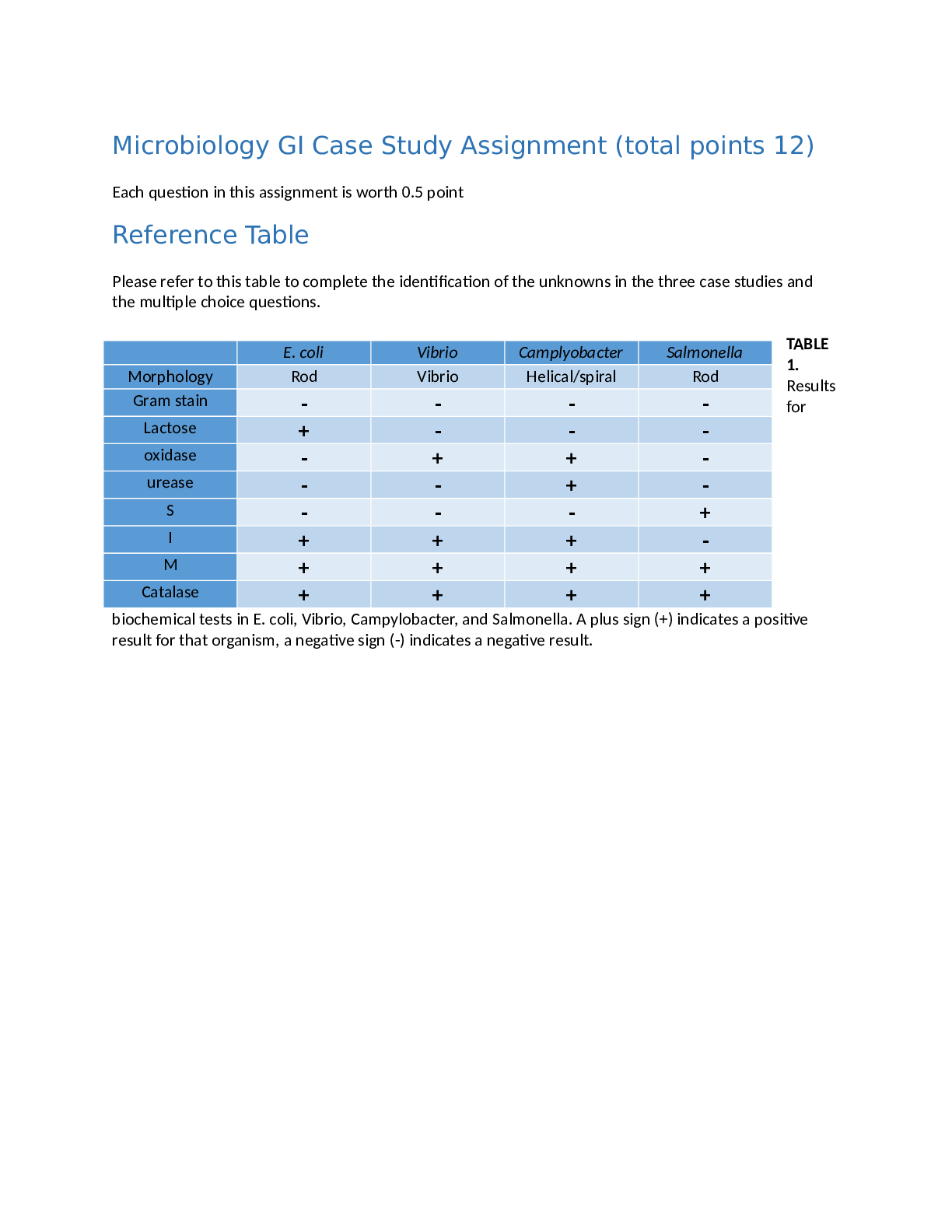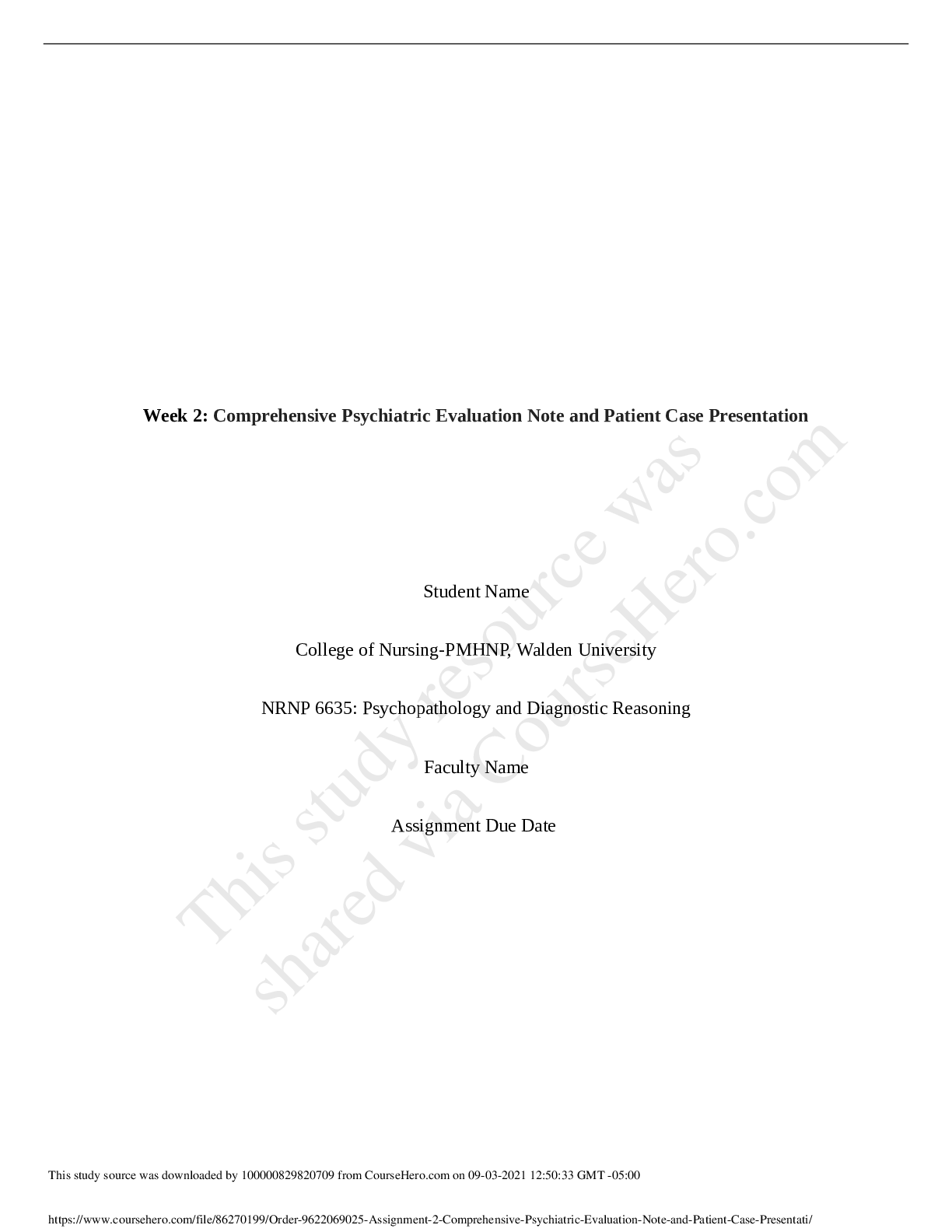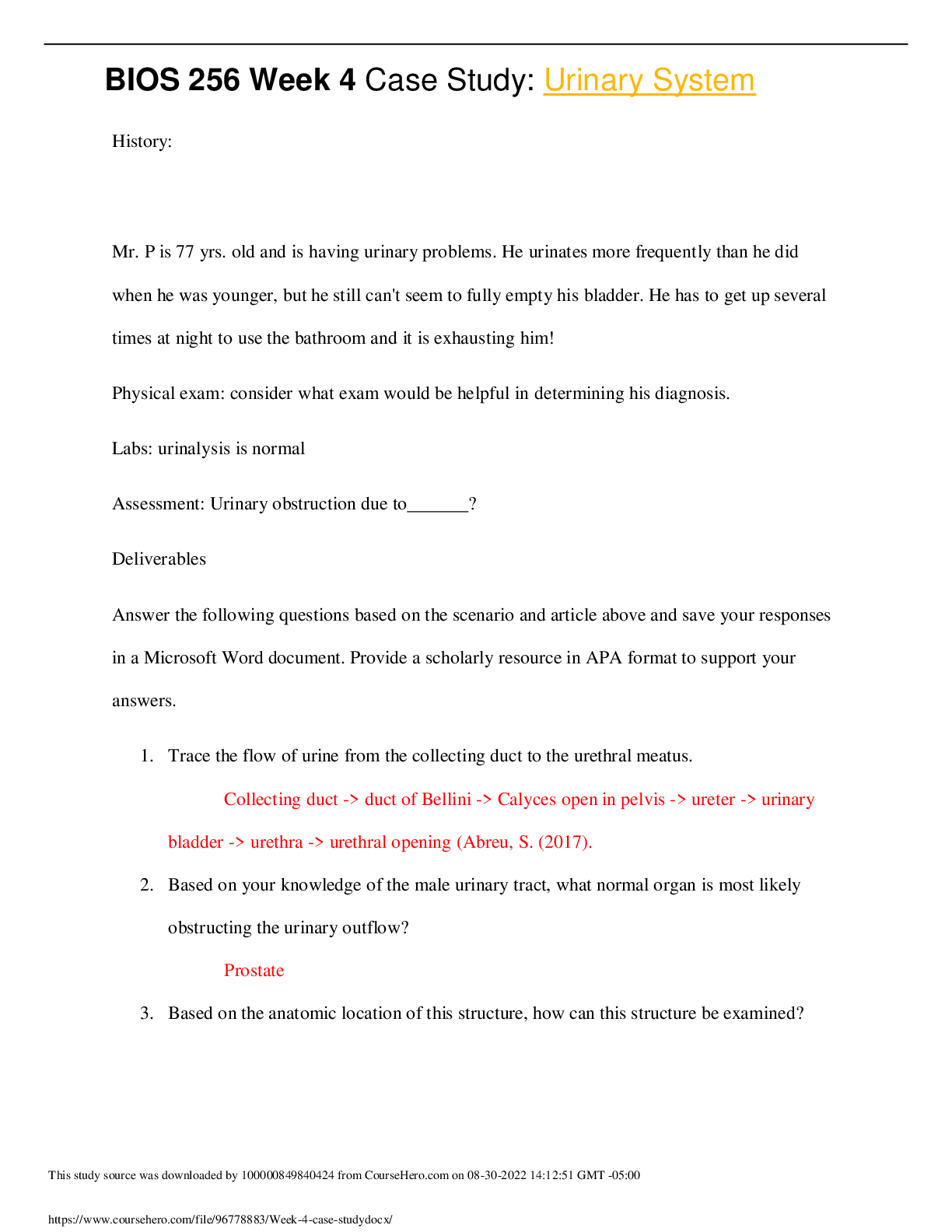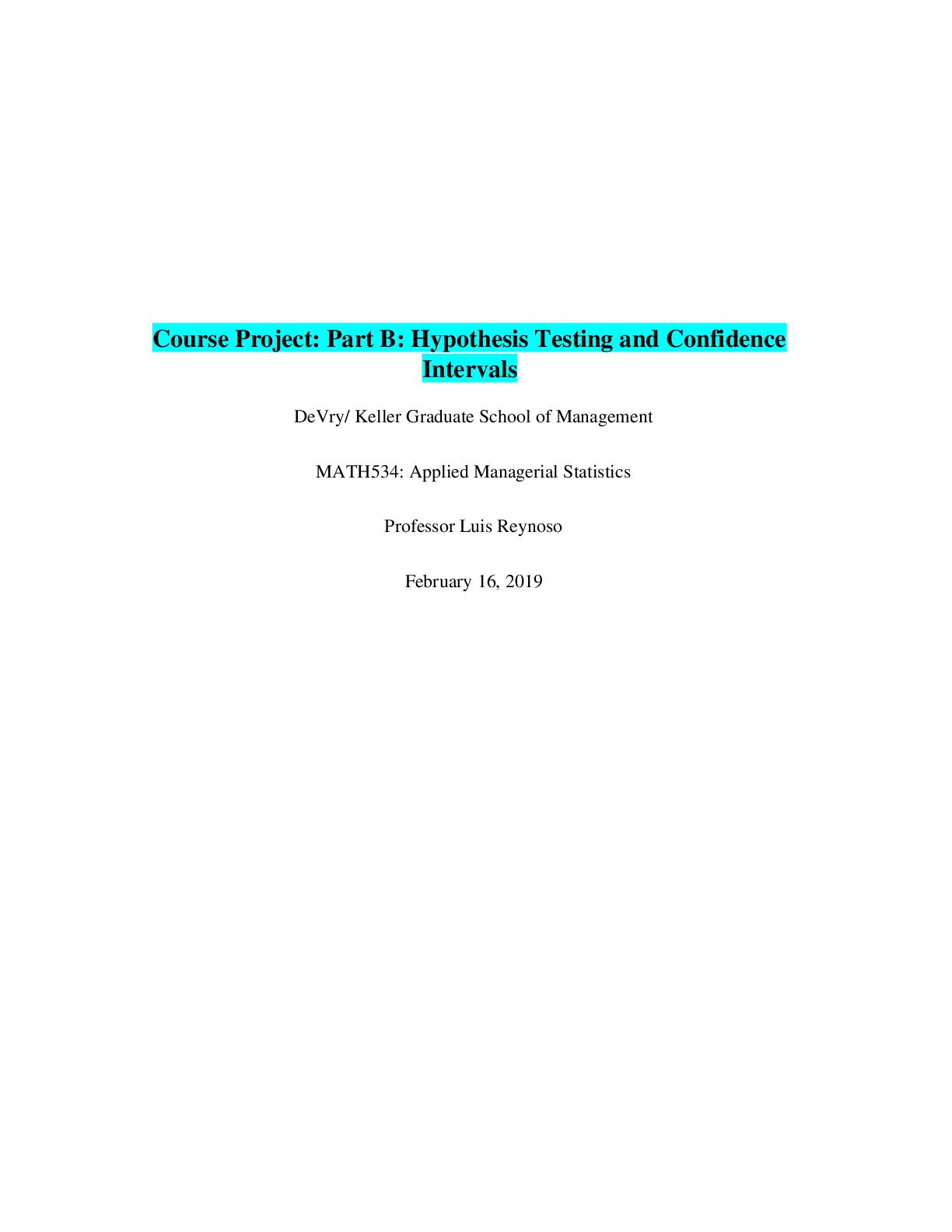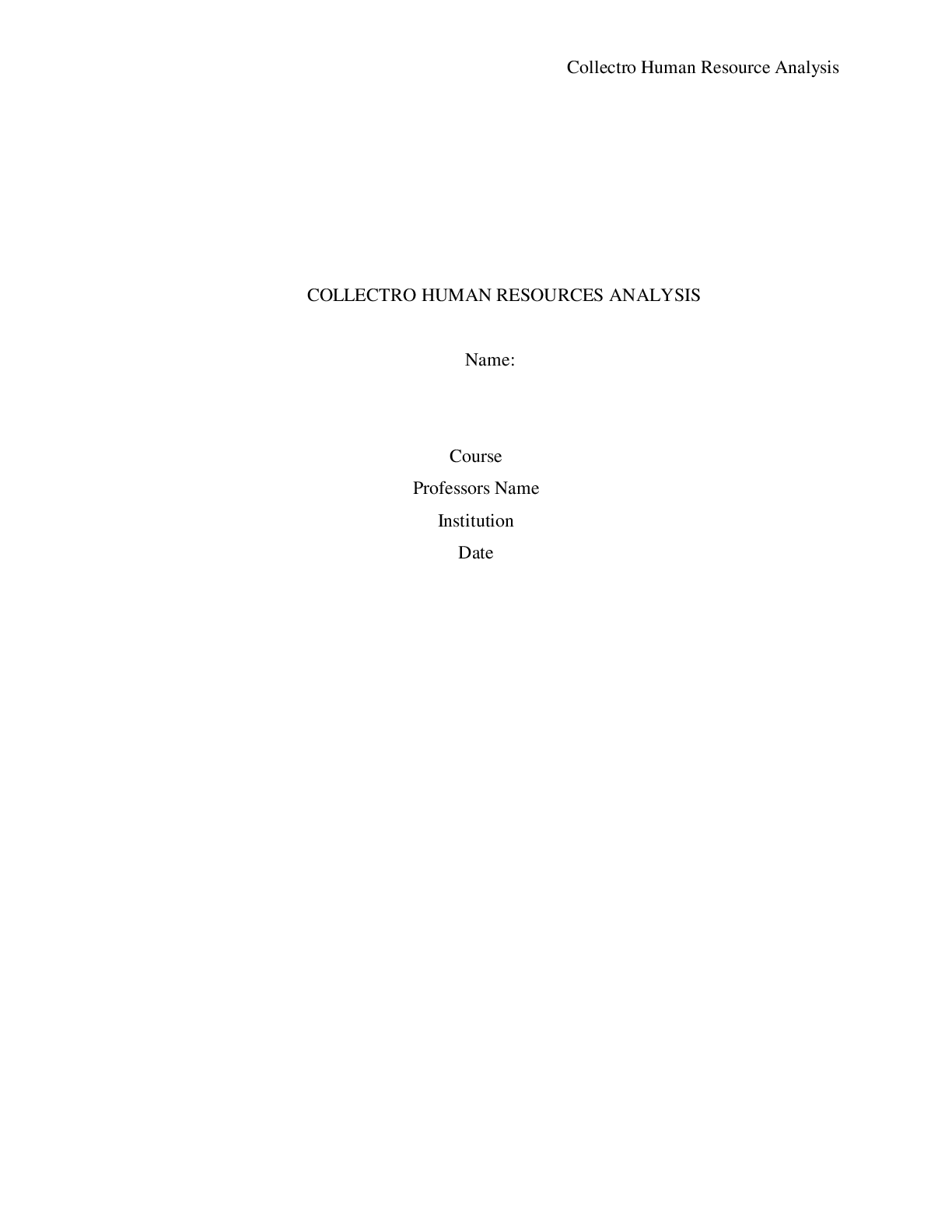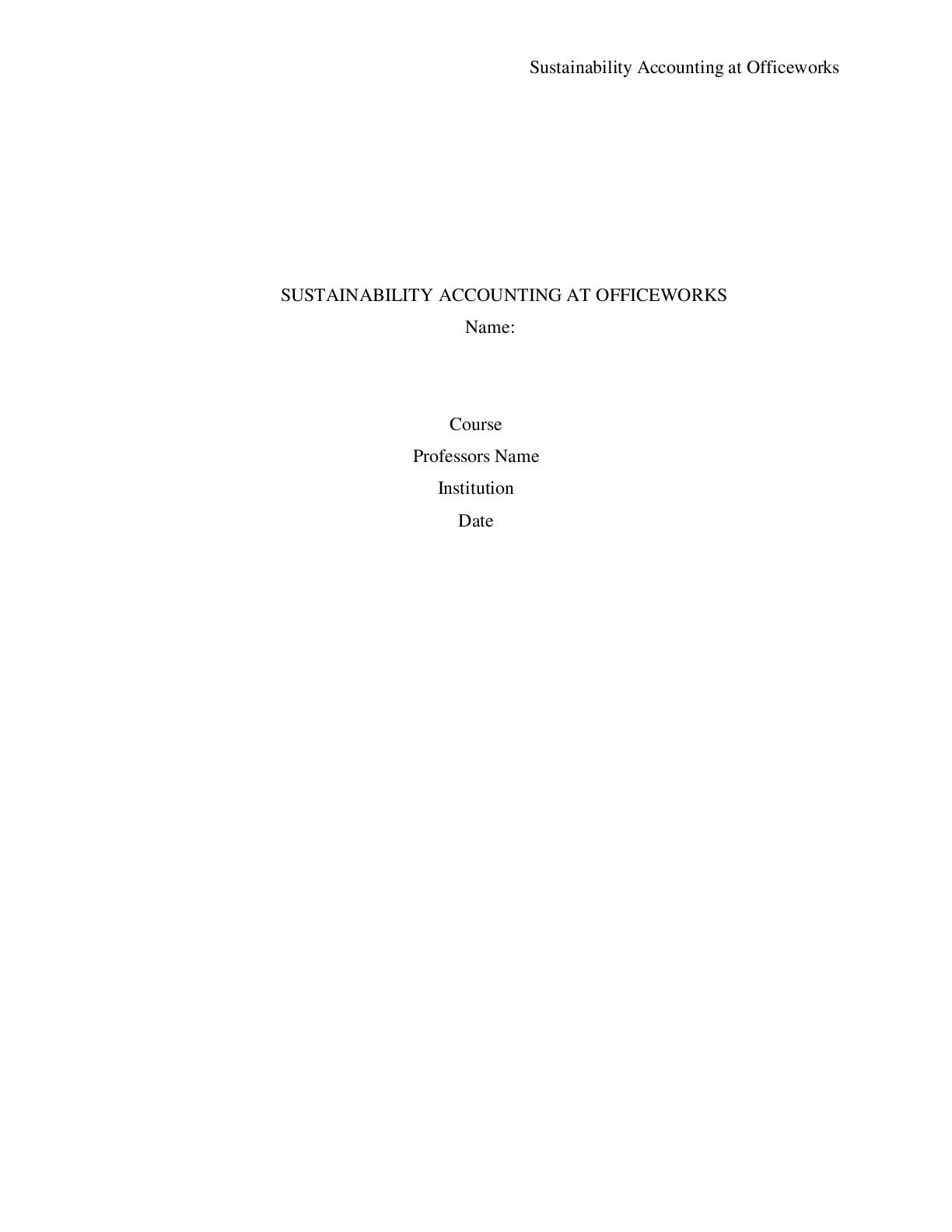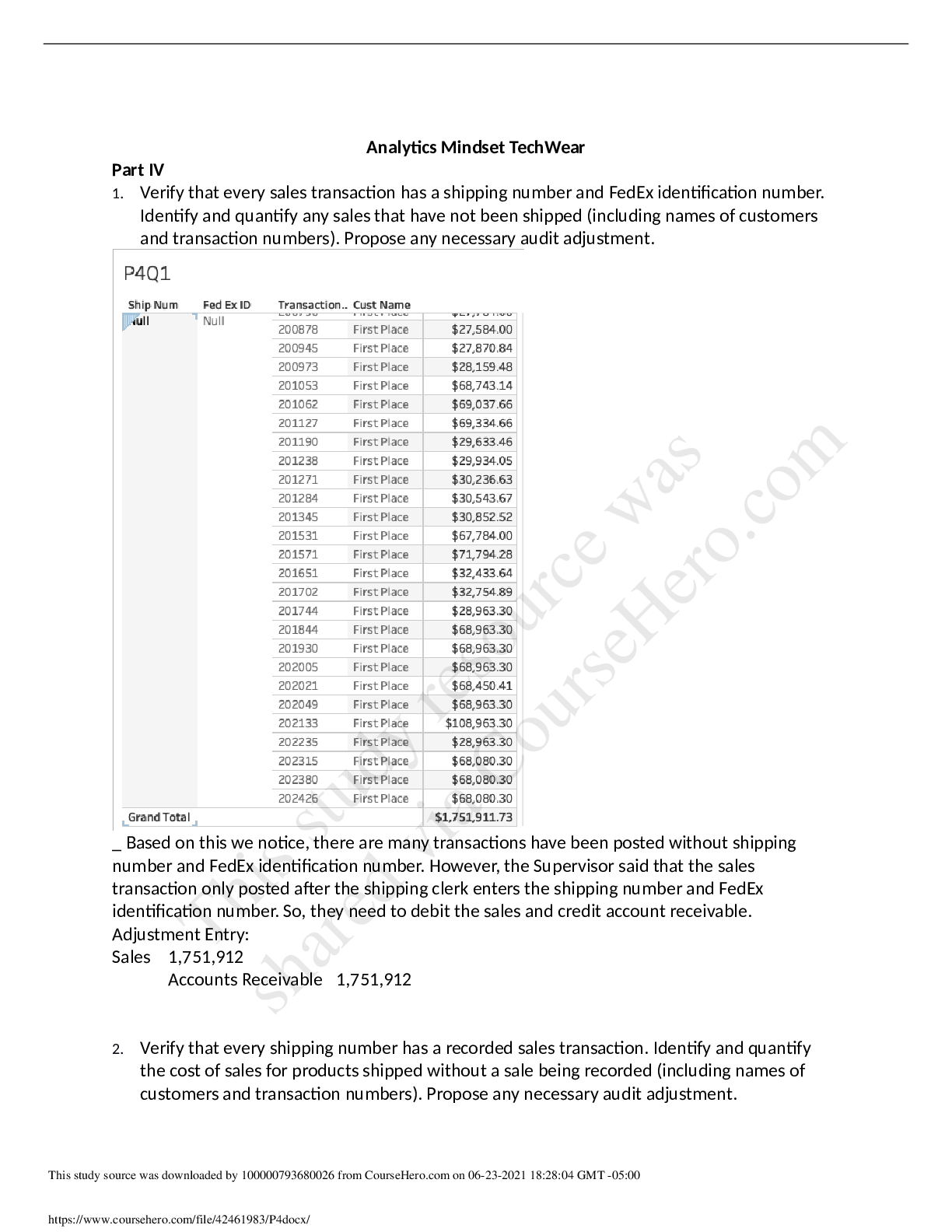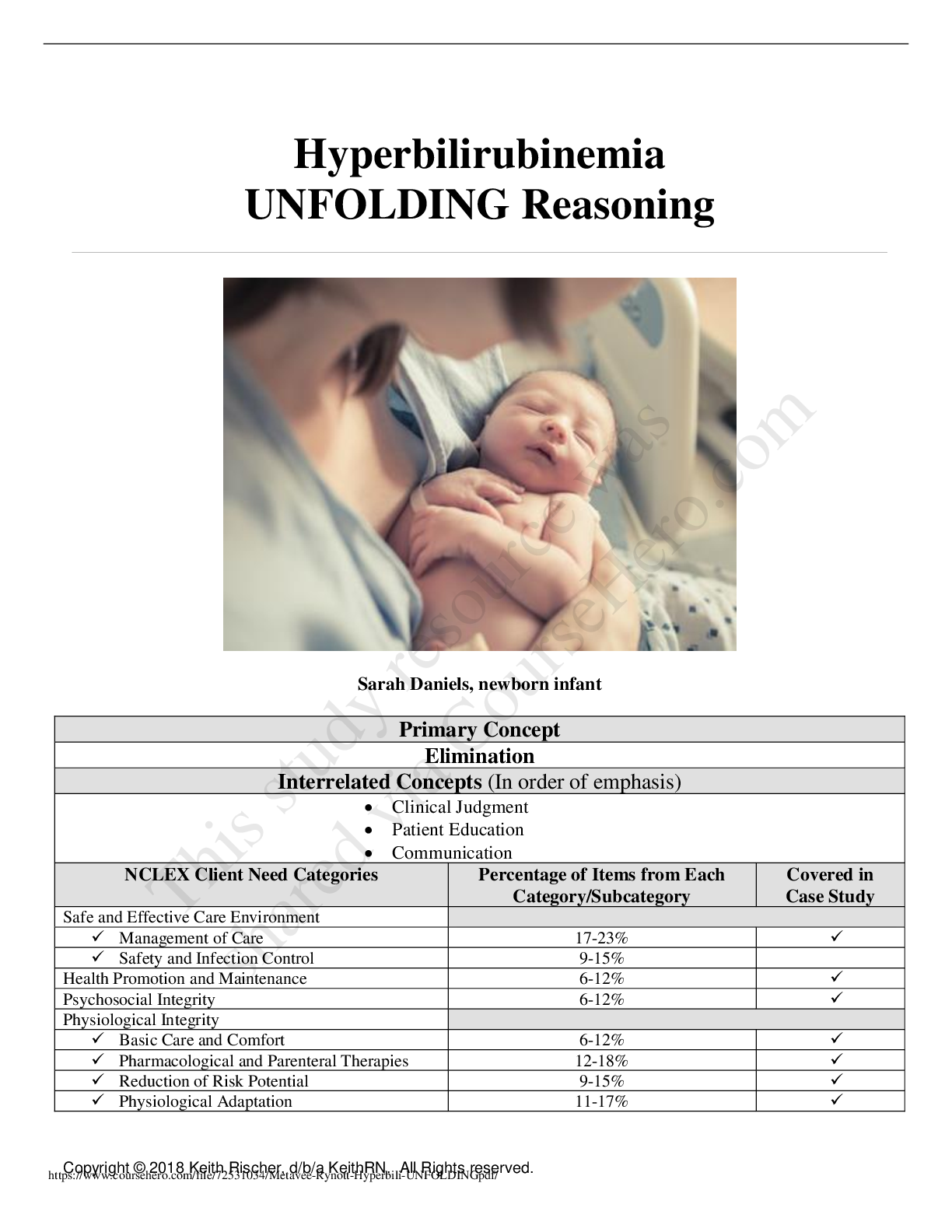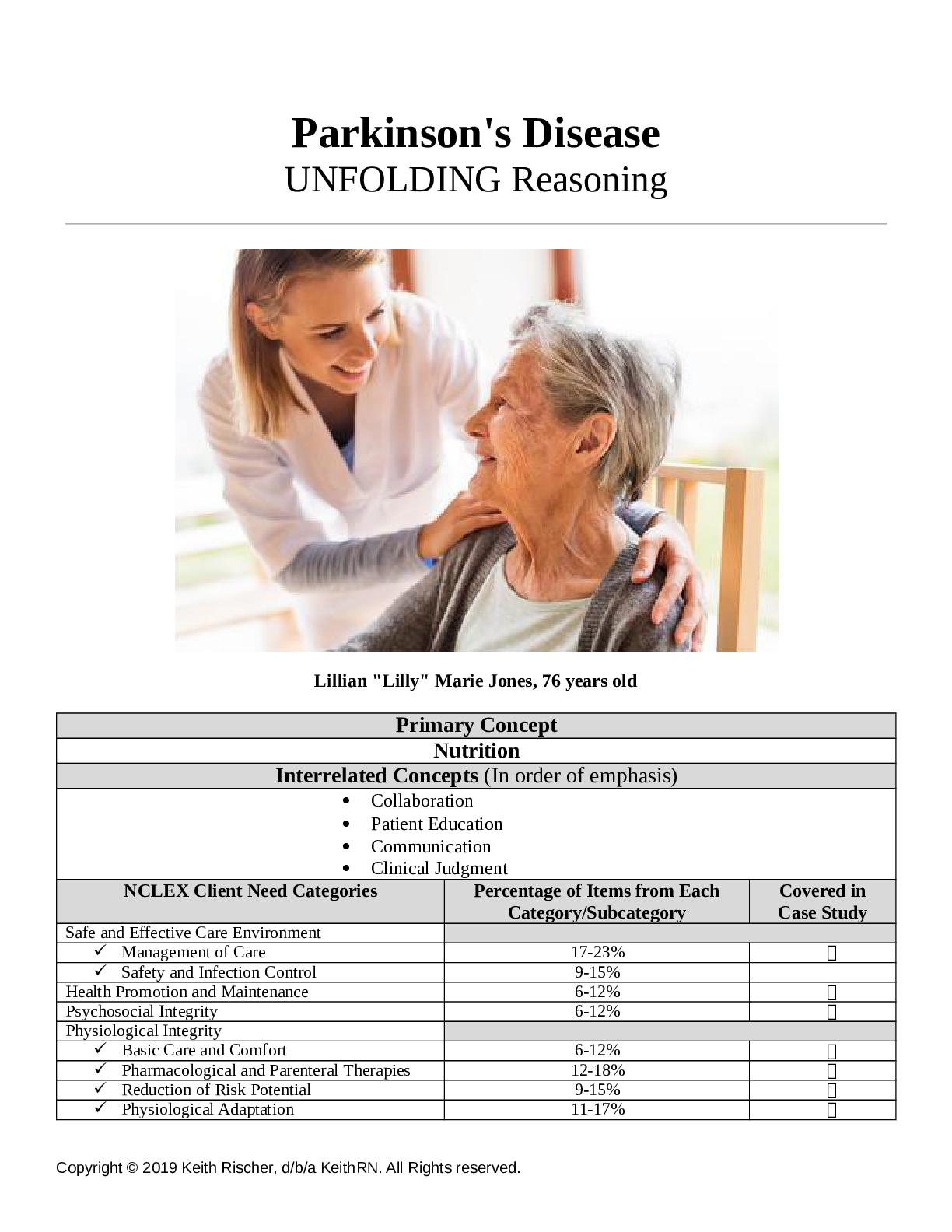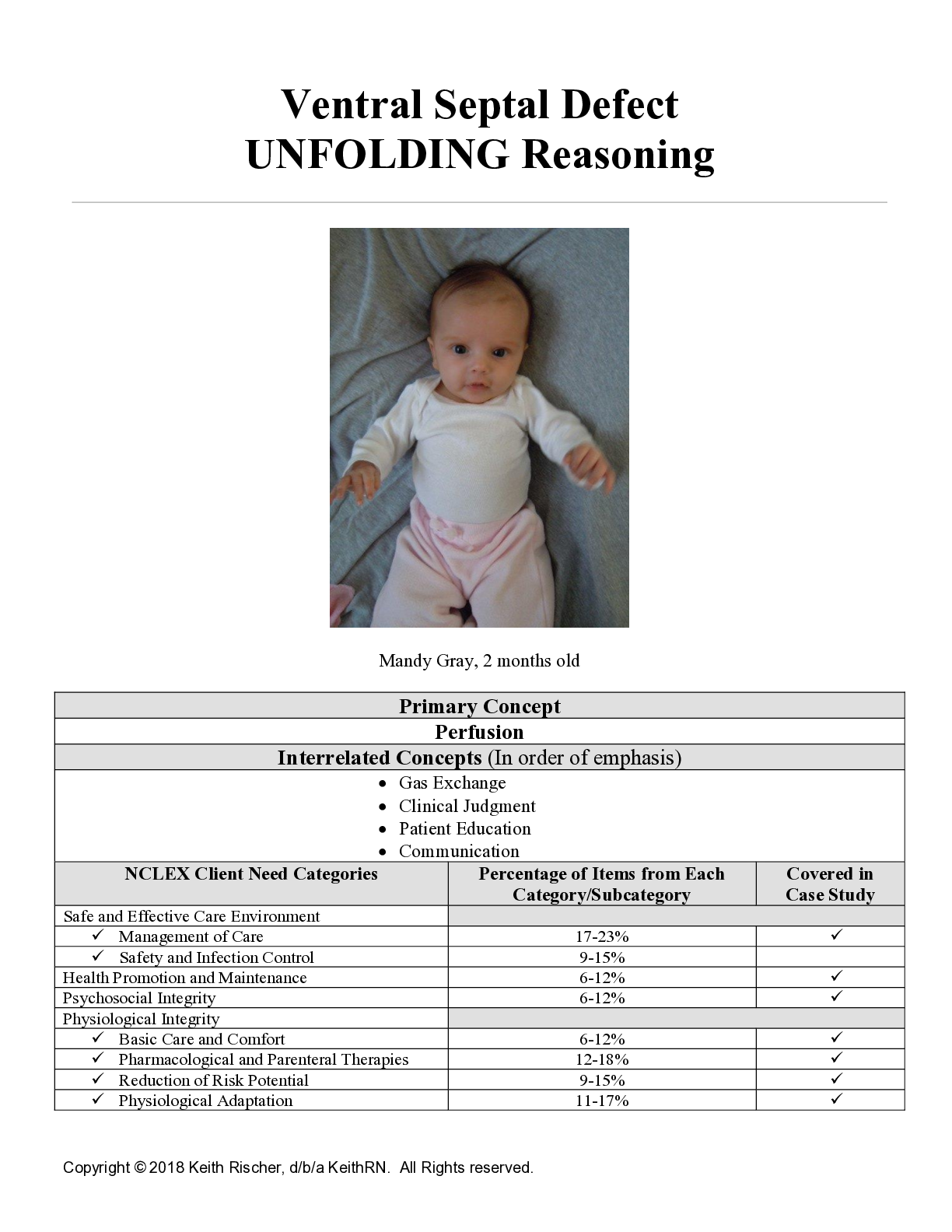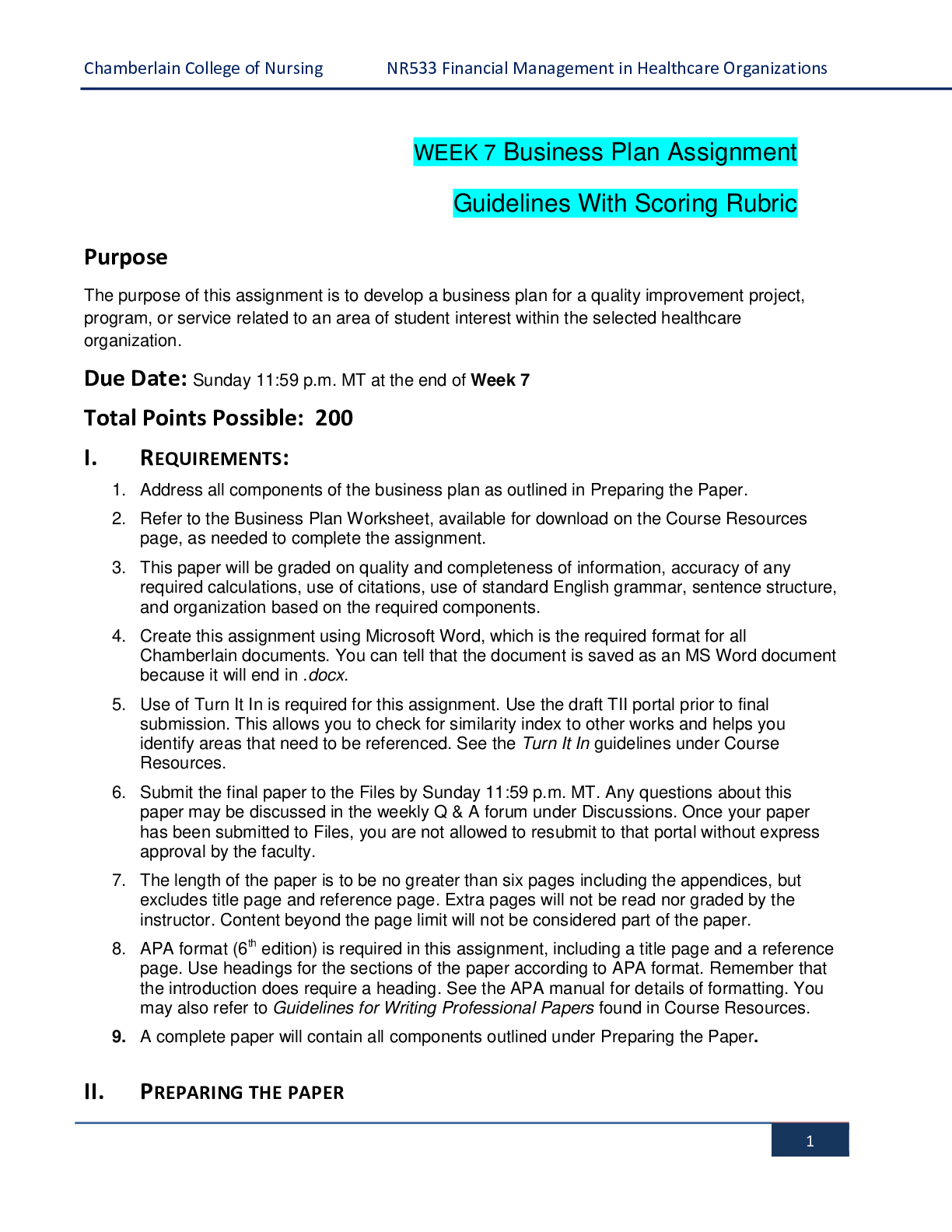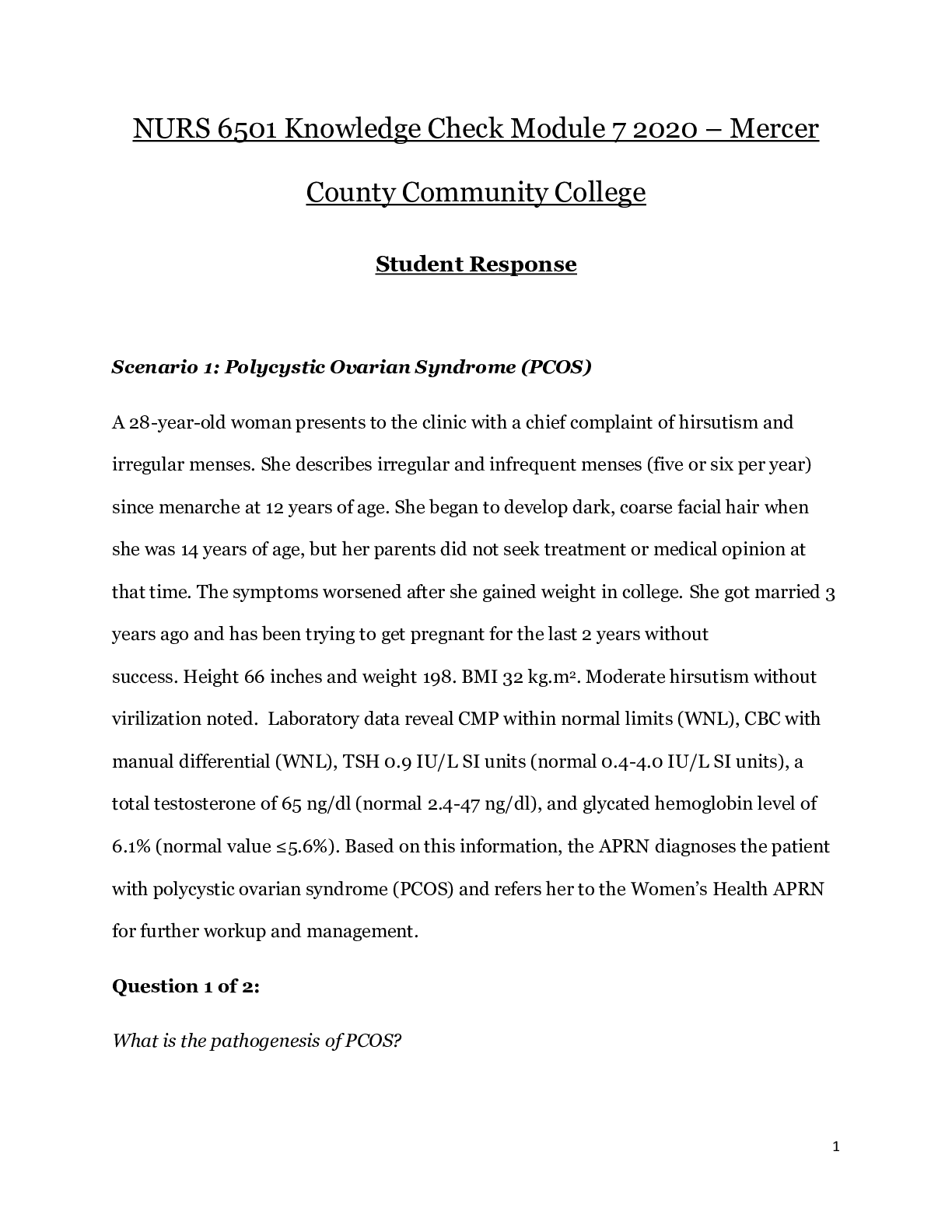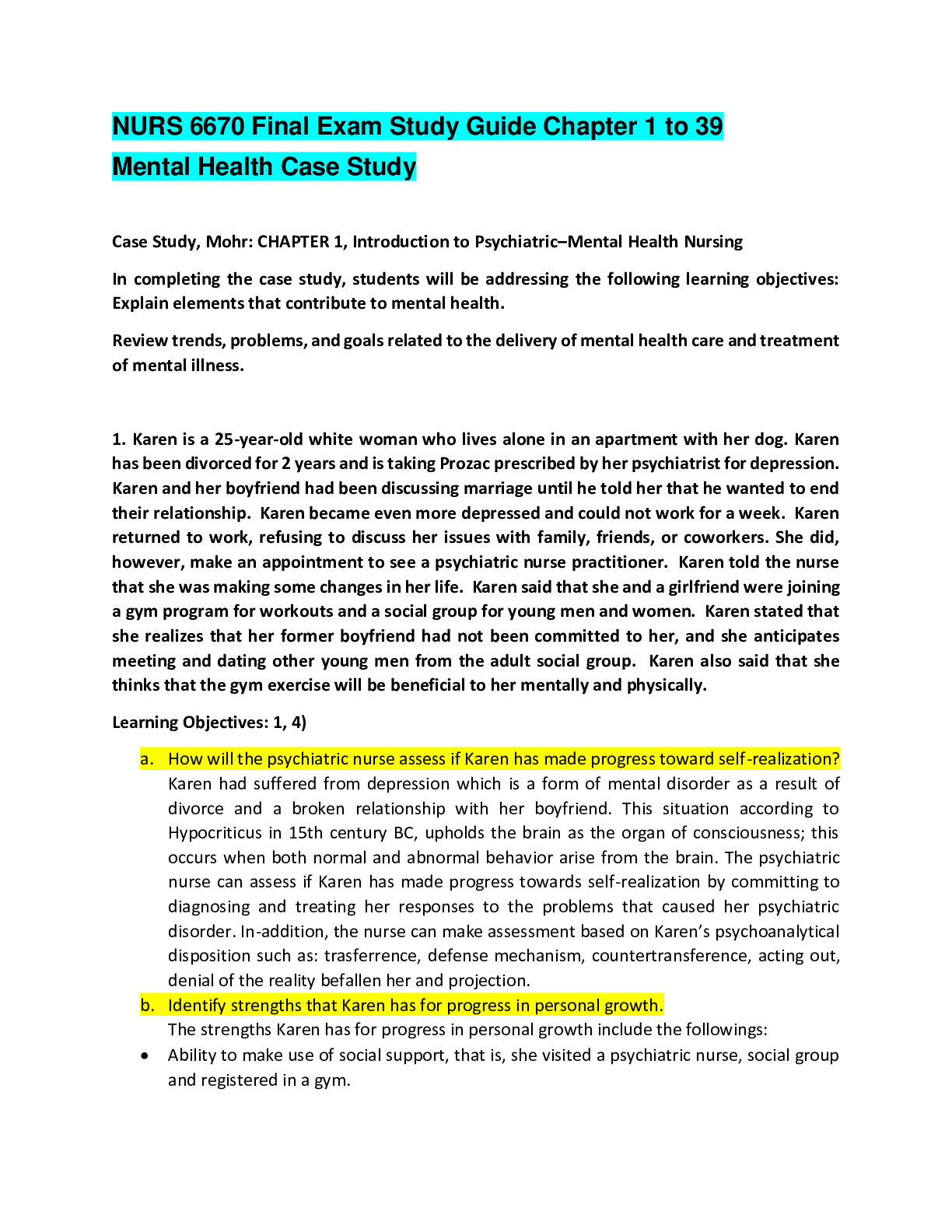*NURSING > CASE STUDY > NRNP 6675 Week 3 Assgn+SOAP (GRADED A+) Focused SOAP Note and Patient Case Presentation | 100% Guara (All)
NRNP 6675 Week 3 Assgn+SOAP (GRADED A+) Focused SOAP Note and Patient Case Presentation | 100% Guaranteed Pass
Document Content and Description Below
Week 3: Focused SOAP Note and Patient Case Presentation College of Nursing-PMHNP, Walden University NRNP 6675: PMHNP Care Across the Lifespan 2 Practicum ... Introduction Each mental intervention is based on the evidence gathered during the initial interview with the patient; each patient's therapy begins with a thorough medical and mental health evaluation, the incorporation of trust, and a dialogue of past mental health history, substance misuse history, family mental health history, and so forth. The evaluation of the patient in this case was documented, and a diagnostic impression was formed based on the information obtained from the patient during the evaluation. A therapy strategy was devised when the case was developed. The patient is a 7-year-old Caucasian boy who was scheduled for an initial screening for a mood disorder after her pediatrician recommended that she consult a psychiatrist. At this time, the patient is not taking any medications. DDAVP PO was given to the patient, but it was stopped since it was ineffective. Patient Initial: R.C Age: 7 Gender: Male Subjective Data: CC: "My mother said you will be able to help me with my mood problem" HPI: R.C a 7-year-old White male who was referred to a psychiatrist for evaluation after several treatments and efforts by his teacher to help him with his mood. According to patient's mother during the interview, the mother said that the pediatrician placed patient on DDAVP which did not help patient. Mother did not list dose of medication or frequency. During the interview, patient states that he feels worried most time. Patient said " I am worried about everything". Patient admits to bad dreams and that he dreams a lot that he can't find his brother and mom. When asked if patient feels lost. Patient responding saying " I worry about my mom and brother when I am alone". Patient went further to state "People in school don't like me. They call me smelly and calls me names". Patient said that his mom said his school mates calls him those names because patient does not take her baths. Patient expressed that he is sad about it. Patient said sometimes he will have accidents at night. Patient also states that his school mates his school mates don't know how it feels when your father can't come back home and that he worried what if his mom does not come home. Patient states that his teacher also picks on him in class. His teacher was telling him to sit down and focus. Patients admit to harming other by saying" I have thrown book at Billy". Denies ever causing harm to himself or any intention to harm himself. When the mother was interviewed, the mother expressed her concern that patient is anxious and worry about silly things like his is going to die, that the mom loves his brother more than she loves him, that the mom won't pick him up in school. Mother expressed that he has a difficult time going to sleep, learning difficulty, gets in trouble in school, throws things around the house, wants his light on at night and doors open, has difficult time going to sleep, claims stomach upset just to be sent home from school, almost daily. He won't eat and has lost some weight. lost 3 pounds in the last 3 weeks. Mother explained that he wets the bed at night. That the pediatrician referred them to the Psychiatrist and has prescribed him DDVAP, but the medication doesn't seem to help. Mother expressed that Rev father was killed in the war but she thought Rev was too young to know about death, so she didn't tell him his father is late. Mother feels guilty about not disclosing the death of Rev's father to him and said it was all her fault that Rev functions this way. Substance Use History: denies substance use or anyone using substance at home. Family Psychiatric/Mental/Substance Use History: Patient father had Hypertensin. Patient’s mother: Anxiety. Brother: Asthma, ADHD and Anxiety. Grandfather: Diabetes and cancer. Grandmother: Heart disease. Psychosocial History: Patient lives with mother, little brother and his puppy. Father is deceased. Both parents are Caucasian. Patient is presently finding difficult to keep friends in school. Educational Level: Patient is in Middle school. Legal history: No legal history. Psychiatric History: None Medical History/Surgical History: Bedwetting Birth and Developmental history: Vagina birth with no complications. Patient met all developmental millstones on time. Current Medications: No current prescribed medication or OTC. Patient was once placed on DDAVP. Allergies: NKDA or seasonal allergies Reproductive Hx: Patient denies sexual history or abuse APPEARANCE: Dressed appropriately and well groomed HEENT: No vision problem. Ears normal shape with no discharges. Nose normal shape; no deviation or drainage. No sore throat or swelling around the neck. CV: no cardiovascular abnormality PULMO: Lungs sounds clear and no adventitious lung sounds ABDOMEN: All bowel sounds on all four quadrant GENITOURINARY: No disorder or problem with this system EXTREM: All extremities is moveable; some tremors noted in upper extremities NEURO: alert and oriented to person, place, time, and situation but very unrest SKIN: Skin intact and appropriate; no rash or lesion noted Physical exam: Vital Signs: none at this time Weight: 51Ibs Height: 4 ft Diagnostic results: PHQ 9: Scored 13 GAD 7: scored 10 Objective: Diagnostic results: no diagnostic test ordered or required at this time Assessment: Mental Status Examination Patient appeared stated age, no apparent distress on arrival and during the session. Patient and baby appears well nourished, well groomed. Well dressed and clean. Patient was cooperative, not fidgeting, makes good eye contact and able to sit still. Patient appears to be anxious and worried Affect was full range, somewhat constricted and often sad. Able to stay still. No abnormal movement noted. Gait steady and posture upright. Patient was coherent but not very logical due to worry. No acute psychosis or mood symptoms. No delusions or paranoid behavior noted. Patient has some intrusive thoughts. Patient’s speech was normal rate, rhythm volume and clear. Patient does not feel like she will get better. She had a good judgment and recognized what she needs to be done to care for her baby. Patient was attentive to the provider and attentive to the baby’s needs while she learn. Alert and oriented times 4. Memory both long and short term was intact. Patient denies suicide ideation. Patient admits having intrusive thoughts of hurting baby but patient finds this thoughts upsetting and denies intent. Patient states she removes herself in situation that can cause harm to baby. Differential Diagnoses Adjustment Disorder: "Adjustment disorder is a maladaptive response to recognized psychosocial stressors or life changes that is characterized by obsession with the stressor and failure to adapt." Within three months of the initiation of a specific stressor, disorder is defined as the appearance of emotional or behavioral symptoms in reaction to the stressor. Adjustment can result from expected or unexpected events, and it can lead to disorder, causing an individual to feel confused, worried, anxious and disoriented (disoriented), preventing him from going about his normal routine. Separation, dissolution of marriage, the termination of a long-term relationship unexpected death of a loved one, the loss of a career, being cheated on by a partner or spouse, being the victim of a sexual assault are all examples of stressful events that can result to adjustment disorder. The Diagnostic and Statistical Manual of Mental Disorders, Fifth Edition (DSM-5) must be completed within three months after the commencement of the stressor or stressors. In addition, one or both of the following conditions must be fulfilled: Clinically significant distress is defined as distress that is out of proportion to the predicted stressor reactions and symptoms. They cause a lot of pain and make it difficult to function (American Psychiatric Association, 2013). Generalized Anxiety Disorder: Excessive anxiety and worry regarding a number of events or activities, happening more days than not for at least 6 months (such as work or school performance). GAD (generalized anxiety disorder) is a mental health issue that affects both children and adolescents. A youngster with GAD experiences a lot of worry and terror for no apparent reason. Worry may be excessive in comparison to the situation. Physical appearance, prior habits, social acceptance, family difficulties, failing to fulfill parents' expectations, personal abilities, and academic success are all common concerns for children and teens with GAD. Generalized Anxiety Disorder is a natural stress response that, in certain cases, can be beneficial. It can alert us to potential risks and help us plan and pay attention. Excessive dread or anxiety characterizes anxiety disorders, as opposed to normal feelings of apprehension or anxiety. Anxiety disorders are the most prevalent mental illnesses, affecting almost one-third of all adults at some point in their lives. Diagnostic Criteria for Generalized Anxiety Disorder (GAD) in the DSM-5: Excessive anxiety and worry (apprehensive expectancy) about a number of events or activities, occurring more days than not for at least 6 months (such as work or school performance), the individual has difficulty controlling his or her anxiety, and three (or more) of the following six symptoms are linked to anxiety and worry: Being easily fatigued, having difficulty concentrating, or having your mind go blank are all indicators of restlessness or agitation. Irritability manifests itself in the form of irritability, muscle tension, and sleep difficulties (American Psychiatric Association, 2013). Dysthymic Disorder: Depressed mood for most of the day, for more days than not, as indicated by subjective account or observation by others, for at least 2 years. Presence while depressed of two or more of the following: Poor appetite or overeating, insomnia or hypersomnia, low energy or fatigue, low self-esteem, poor concentration or difficulty making decision, feelings of hopelessness. The disturbance is not caused by a substance's direct physiological effects (e.g., a drug of abuse or a medicine) or a general medical condition. Clinically substantial distress or impairment in crucial areas of functioning are caused by the symptoms. Although dysthymia was once thought to be less severe than major depression, its implications are now widely acknowledged to be serious, including significant functional impairment, increased morbidity from physical disease, and an increased risk of suicide. To determine a diagnosis of Dysthymic Disorder, the DSM-5 provides the following criteria. During the 2 years period, the person must have five or more symptoms, with at least one of them being either (1) sad mood or (2) lack of interest or pleasure. Changes in energy level, depressed mood most of the day, nearly every day, decrease or increase in appetite nearly every day, poor self-esteem, anxiety, isolation, appetite change, forgetfulness, not completing assigned chores at work or school, guilt, and loss of energy are all listed in the DSM-5 (American Psychiatric Association, 2013). Reflection Every mental intervention is determined by the information collected during the initial conversation with the client; every client's therapy starts with a comprehensive medical and behavioral health examination, the creation of trust, and a discussion of previous mental health history, substance abuse history, family mental health history, and so on. Individuals with whom they had connections that comprised effective communication, cultural awareness, and the absence of compulsion were considered as trustworthy (Sadock et al., 2014). One thing I might have done differently as a PMHNP is to meet the patient first, establish a therapeutic relationship, ask the young patient about his relationship with his parents, and then ask questions unrelated to the scheduled visit, which would help to create a welcoming atmosphere. Ask open- ended inquiries on the patient's personality, ailment, or personality without appearing to have a bias. Inquire about the patient's sexual orientation and preferred method of communication. Cultural competency includes elements such as trust, respect for diversity, respect for religion, equity, fairness, and social justice, which must all be considered during any interview or encounter between a healthcare practitioner and a patient (Sadock et al., 2014). When I interview a patient about their mental illness symptoms, I look at how they look, speak, and act to determine if there are any clues that could explain their symptoms. Case Formulation and Treatment Plan The patient will begin individual supportive therapy then advance to family and peer group supportive therapy depending on level of improvement. The patient’s mother will receive an educational pamphlet, as well as assignments and a follow-up consultation, on themes that will aid in the healing and coping process. Patient will be started on fluoxetine (Prozac). An initial dose of 10 mg/day then increased to 20 mg/day after 1 week. Education and side effects of medication was provided for mother and son. Bedwetting can be avoided by limiting how much a child drinks in the evening, avoiding caffeinated meals and beverages, and promoting regular toilet usage throughout the day. Mother was told to wake the patient up at night to urinate and to make sure the patient's clothing were changed before going to school in the morning. Personal hygiene assistance should be provided to the patient. In case of emergency, the provider provided patient with helpful phone numbers: 911 for emergencies and the Client's Crisis Line. Reports from doctors and therapists were evaluated for mutual and collaborative understanding and for continuity of care. Patient’s mother was educated and was advised to call their primary care physician or go to the nearest emergency department if they had any questions or concerns about the development of any undesirable or unexpected outcome or side effects. Every 30 days, patient must return to psych tele-appointments for continuity of care and for provider to monitor progress and outcome of treatment but patient will return a week after starting Prozac for adjustment of dosing and to monitor improvement. References American Psychiatric Association. (2013). Diagnostic and Statistical Manual of Mental Disorders, fifth edition DSM-5 American Psychiatric Association, 2013. Bachem, R., & Casey, P. (2018). Adjustment disorder: A diagnosis whose time has come. Journal of Affective Disorders, 227, 243-253. https://doi.org/10.1016/j.jad.2017.10.034 Sadock, B.J., Sadock, V.A., & Ruiz, P. (2014). Kaplan and Sadock’s synopsis of psychiatry: Behavioral sciences/clinical psychiatry (11 th ed.). Philadelphia, PA: Wolters Kluwer. Thapar, A., Pine, D. S., Leckman, J. F., Scott, S., Snowling, M. J., & Taylor, E. A. (Eds.). (2015). Rutter’s child and adolescent psychiatry (6th ed.). Wiley Blackwell. Walden University. (2021). Case study: Dev Cordoba. Walden University Blackboard. https://class.waldenu.edu [Show More]
Last updated: 1 year ago
Preview 1 out of 11 pages
Instant download

Instant download
Reviews( 0 )
Document information
Connected school, study & course
About the document
Uploaded On
Aug 24, 2022
Number of pages
11
Written in
Additional information
This document has been written for:
Uploaded
Aug 24, 2022
Downloads
0
Views
50



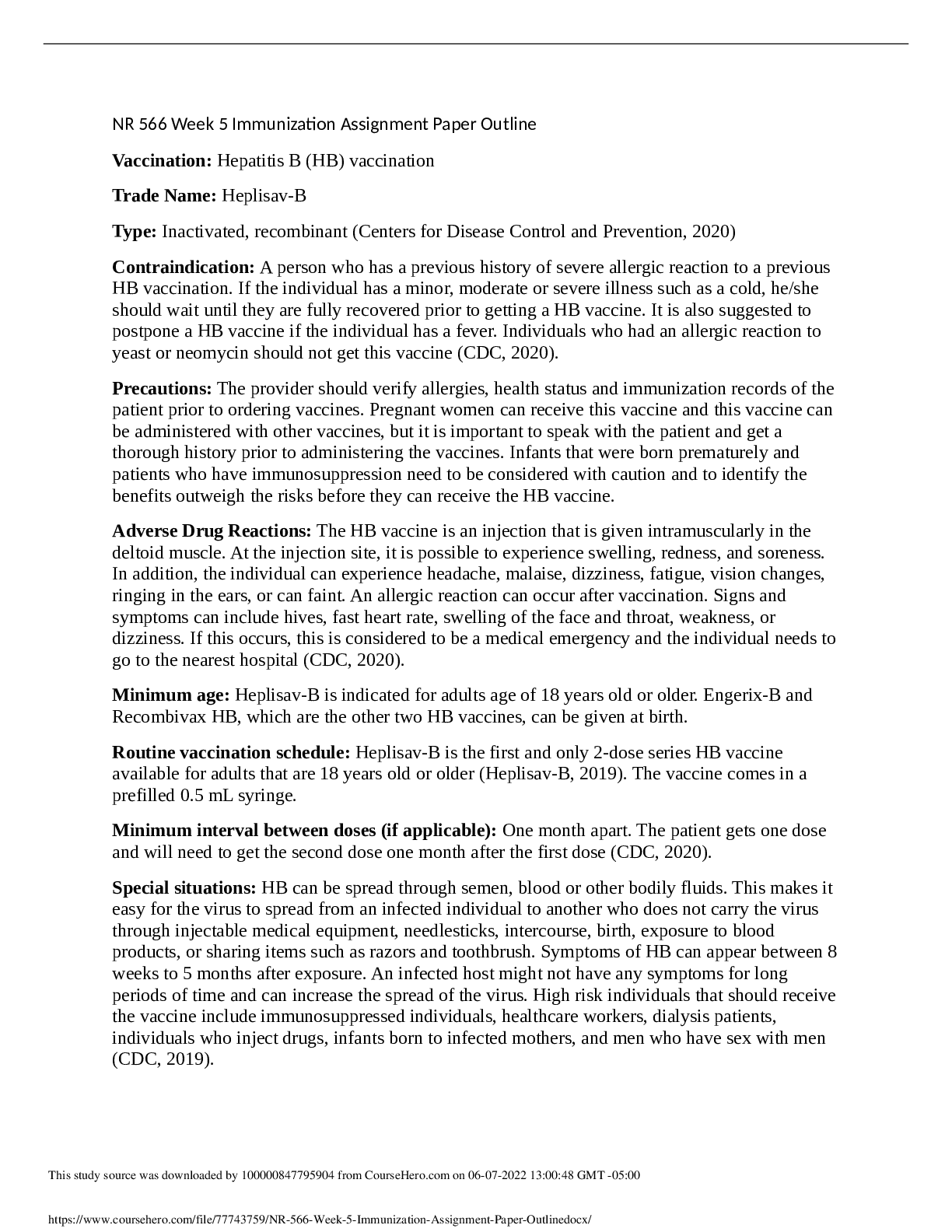

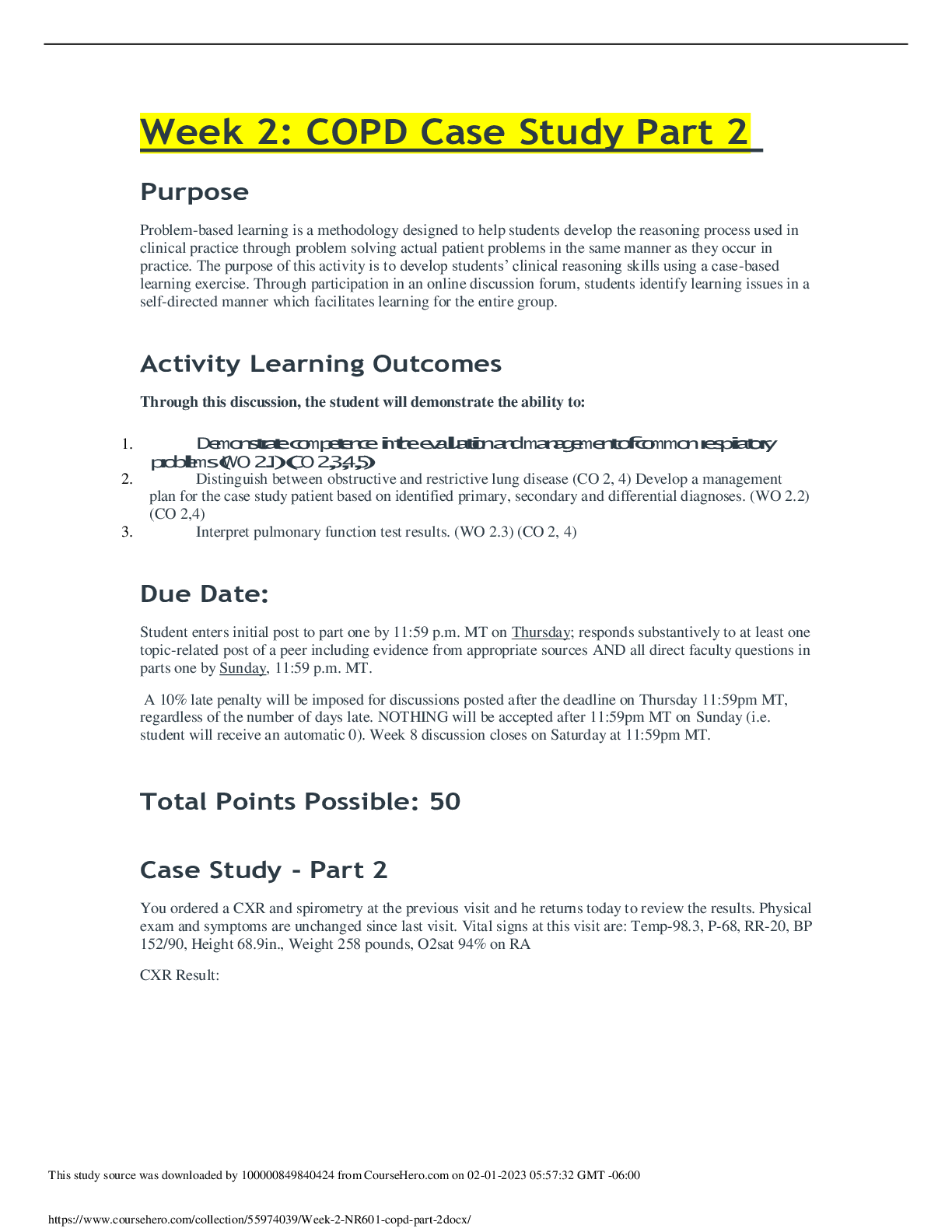
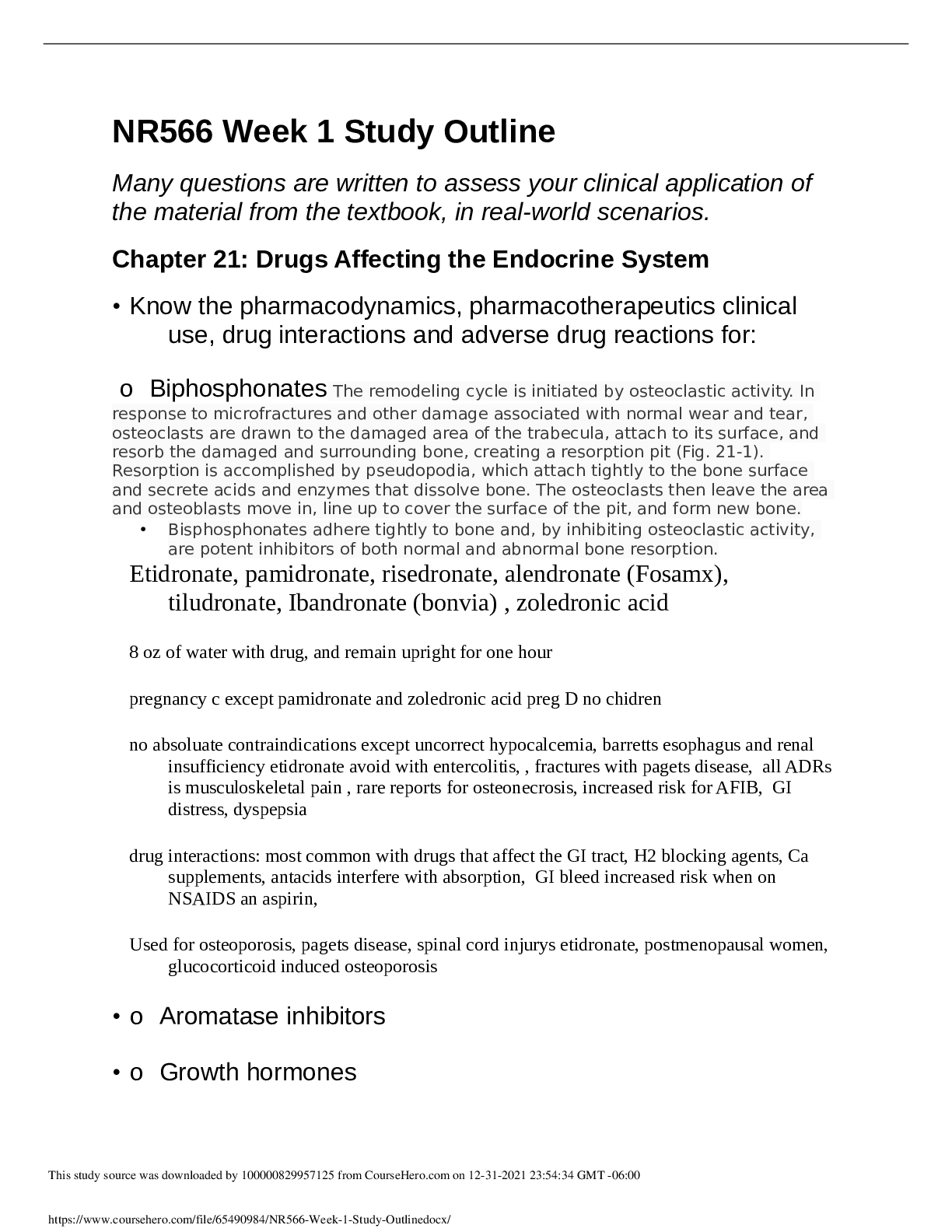



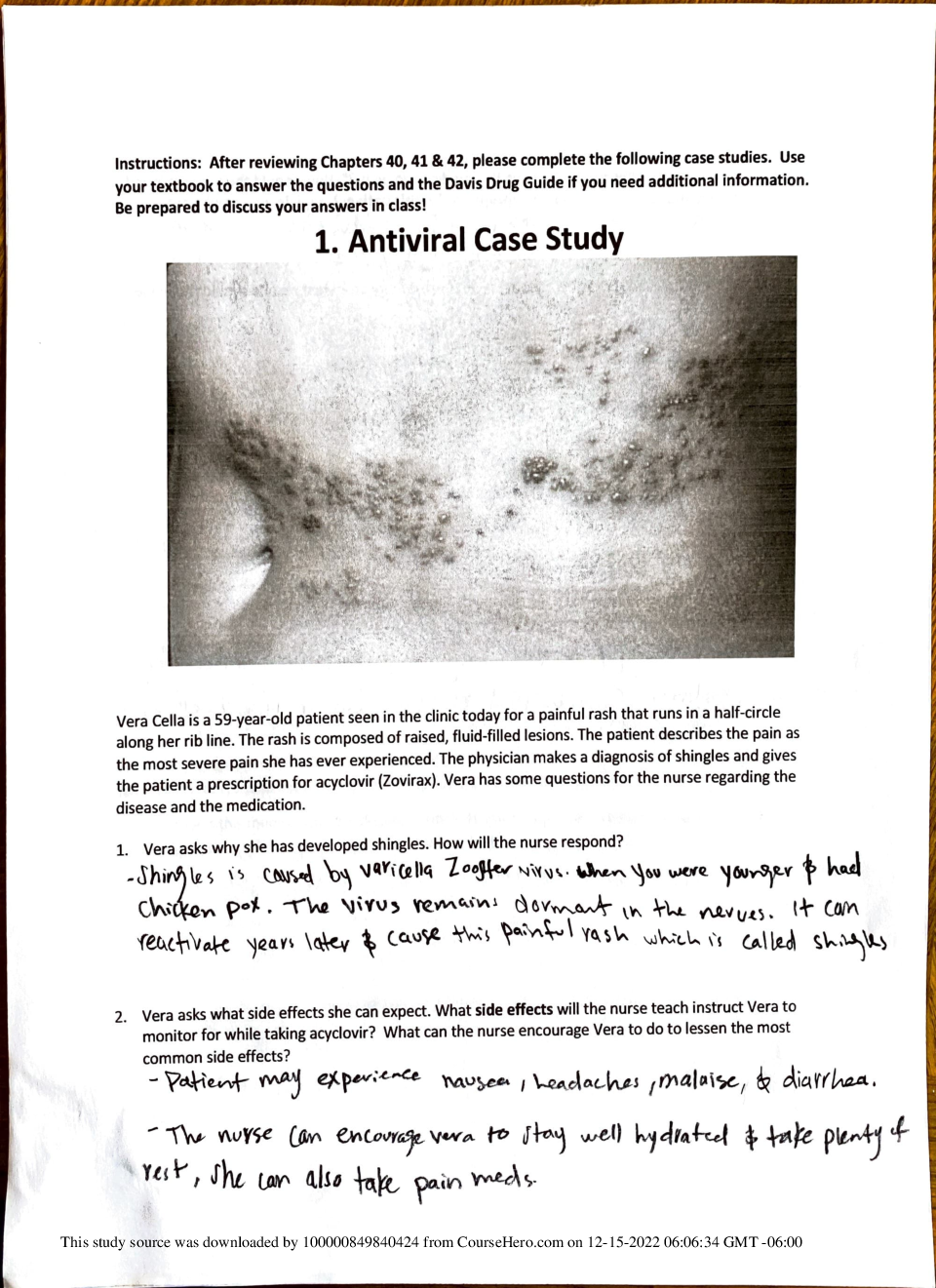


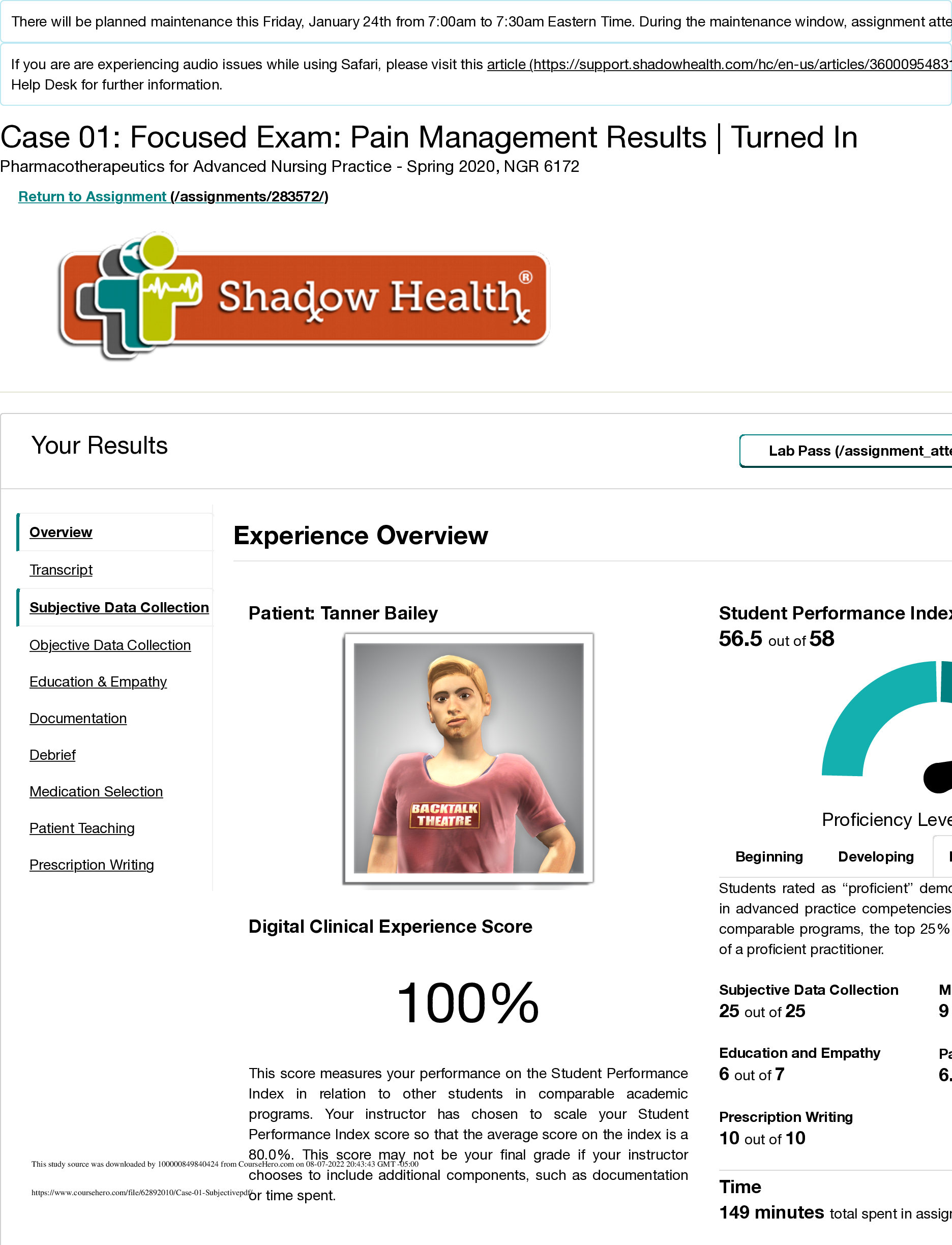
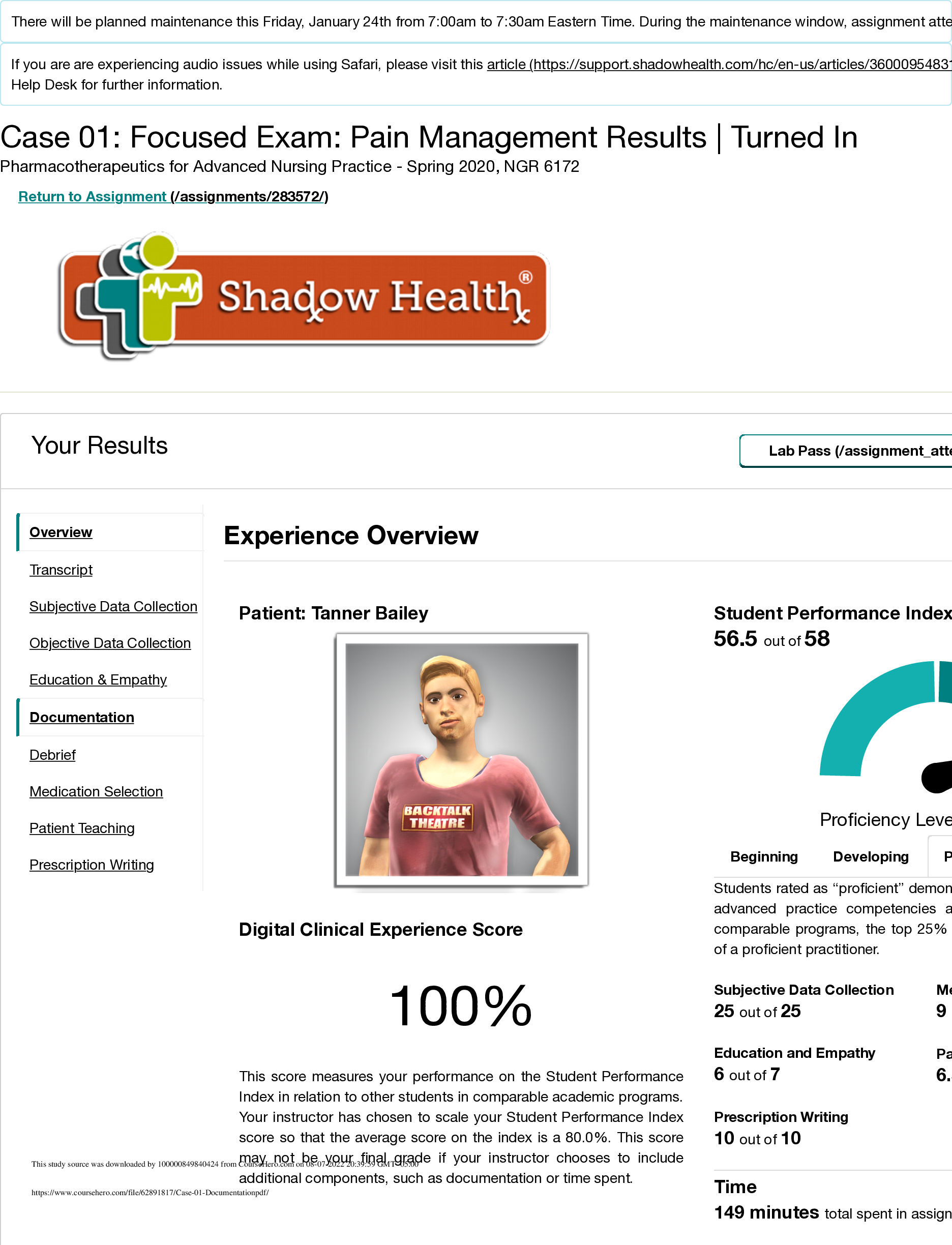

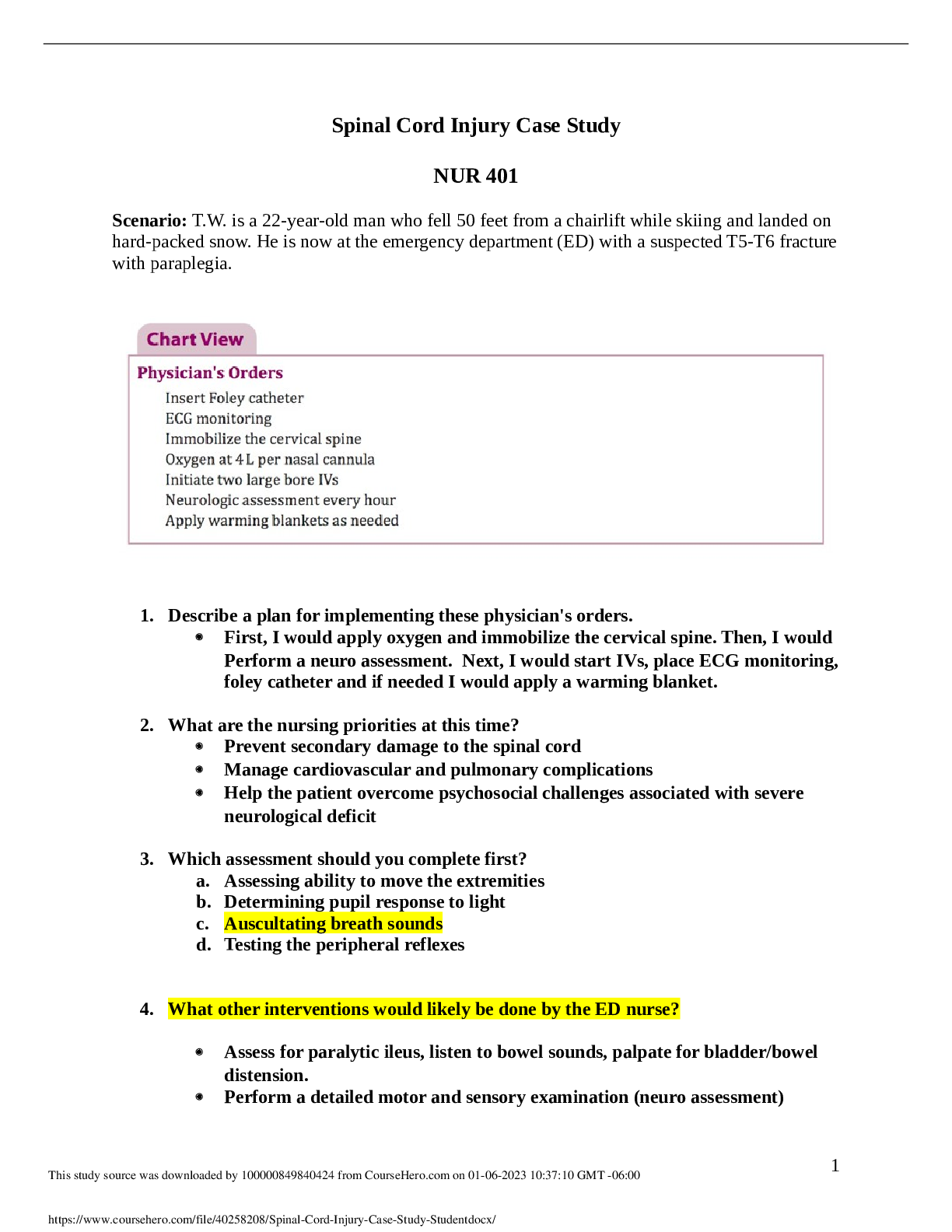
.png)
